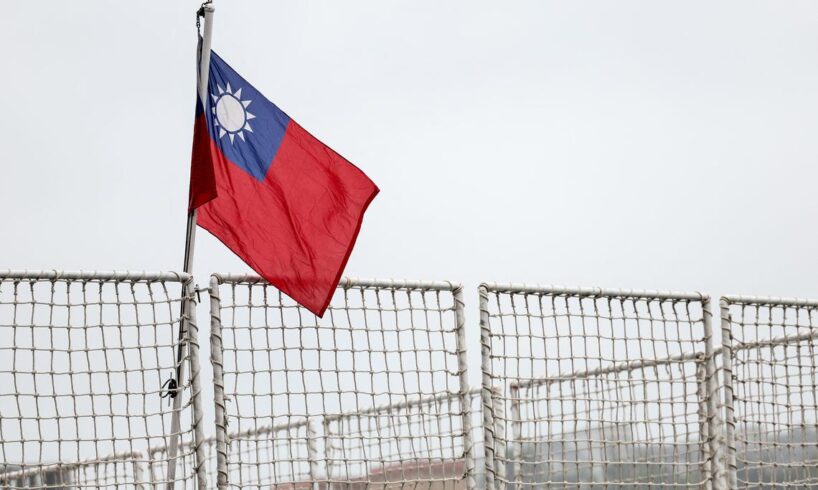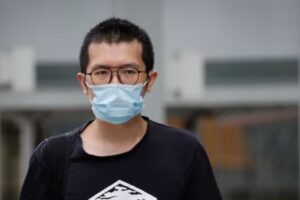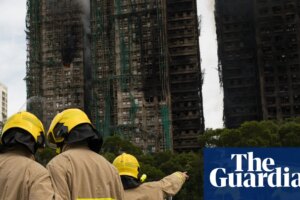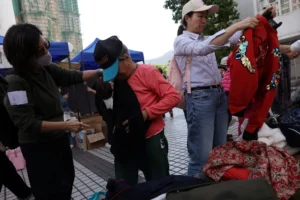
TAIPEI – Taiwan’s army on July 10 displayed the firepower of its first US-sourced M1A2T Abrams tanks – a traditional weapon that analysts say will need to be increasingly protected against drones in any future battle, given lessons from the Ukraine war.
Four Abrams tanks were shown manoeuvring across a mud-choked army training ground in Hsinchu county which is located in north-western Taiwan, facing the Taiwan strait.
The tanks were seen firing at moving and static targets, on the second day of Taiwan’s annual military exercises that are designed to test the island’s resilience in a conflict with China.
Wearing a combat helmet, Taiwan President Lai Ching-te observed the firing, saying later that with “every increase in the military’s combat power, the nation and its people gain an extra layer of security”.
“Whether in terms of strike capability or mobility, it was extremely powerful – undoubtedly the strongest tank on the battlefield,” Mr Lai said.
Senior military officials in Mr Lai’s government say they intend the comprehensive 10-day drills to show both China and the international community, including its key weapons supplier the US, that Taiwan is determined to defend itself against any China attack or invasion.
China views the democratically governed island as its own and has intensified military pressure around Taiwan over the last five years.
Mr Lai’s comments also come ahead of a recall parliamentary election on July 26 that could see his ruling Democratic Progressive Party take back control of the legislature.
The tanks are among the first batch of 38 Abrams main battle tanks delivered in December 2024, with the rest of the 108 ordered by Taiwan due to be delivered later in 2025 and in 2026.
They marked Taiwan’s first new tanks for 24 years.
Analysts and regional military attaches say that while the Abrams remains a potent and highly adaptable weapon that would help Taiwan defend its cities and coasts in an invasion scenario, Taiwan will have to leverage its counter-drone technology to protect them.
Both Russian and Ukrainian tanks, including US Abrams supplied to Kyiv, have reportedly proven vulnerable to drones and advanced anti-tank weapons.
The tanks have yet to be fully commissioned, and the July 10 test firing was not a formal part of the Han Kuang drills, which are designed to replicate full battle conditions at sea, on land and in the skies, military officials said.
Major-General Chou Kuang-i, who heads the 584th armour brigade, said he expected the tanks to be in service later in 2025 and deployed to combat zones according to “the current enemy threat and the tactical needs”.
Singapore-based military scholar Thomas Lim said he expected Taiwan would attempt in a war scenario to cover their “prized assets” with counter drone elements, or also deploy them from high positions for extra protection.
“This isn’t straightforward… but it isn’t a problem unique to Abrams,” said Mr Lim of the S. Rajaratnam School of International Studies in Singapore.
Mr Lai said he believed that through “realistic combat training”, the M1A2T tank will “be able to integrate with drones and innovative tactics to more effectively fulfil the nation’s strategic objectives”.
China’s Defence Ministry on July 8 said Taiwan’s drills were “nothing but a bluff”.
Alongside the military drills Taiwan authorities are holding civil defence rehearsals to test public reactions and build resilience.
Local supermarket chain PX Mart held evacuation drills in three stores on July 10, with shoppers escorted into basements as air raid sirens sounded.
Deputy secretary-general of Taiwan’s National Security Council, Mr Lin Fei-fan, said the drill is a reminder that both government and civil society must be prepared for ‘every kind of situation’, citing the challenges and risk facing the island. REUTERS
TaiwanChinaTaiwan tensionsUnited StatesDefence and military





